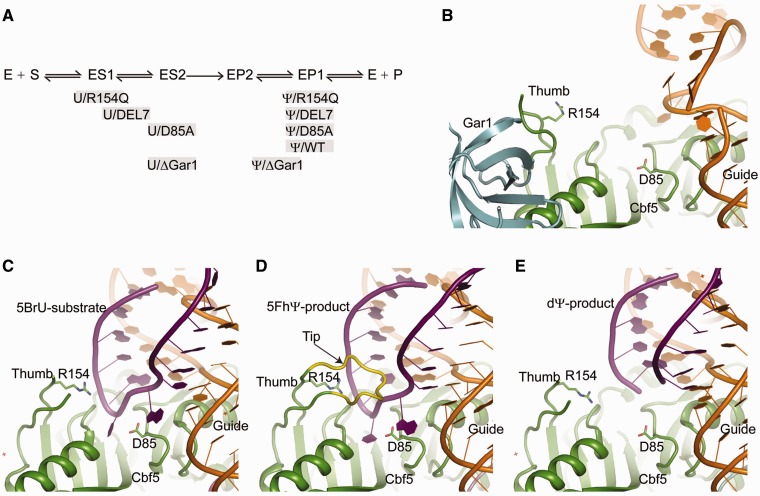Figure 7.
Substrate turnover model in H/ACA RNA-guided pseudouridylation. (A) A simplified two-step model for substrate loading and product release. The U substrate (S) first assembles with the enzyme (E) into an intermediate ES1, which then converts into the reactive complex ES2 upon folding of the thumb. After modification, the product (P) is initially bound in the reactive-like EP2 complex, which transforms into the EP1 complex after release of the thumb. Various substrate/product complexes formed with different RNP mutants are placed along the reaction pathway at positions approximate to their mimic reaction intermediates. (B) Structure of the fully assembled substrate-free H/ACA RNP (PDB code 2HVY). (C) Structure of ΔGar1 H/ACA RNP in complex with a 5-bromouridine (5BrU)-containing substrate (PDB code 3LWO). (D) Structure of ΔGar1 H/ACA RNP in complex with a 5FhΨ-containing substrate (PDB code 2HAX). The thumb tip deleted in DEL7 mutant is shown in yellow. (E) Structure of ΔGar1 H/ACA RNP in complex with a 2′-deoxypseudouridine (dΨ)-containing substrate (PDB code 3LWV).

